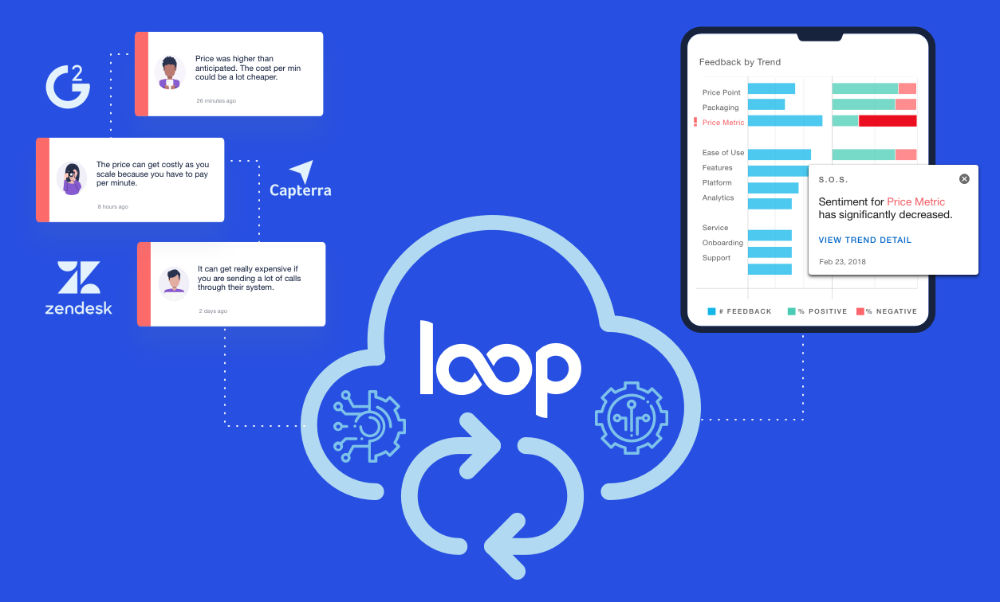Home » How Sales and Marketing Can Collaborate for Customer-Led Growth
How Sales and Marketing Can Collaborate for Customer-Led Growth
Madeline Turner

There’s a problem. We’re all aware of it. We’ve worked for years to overcome it. Despite our best efforts to address it head on, we often find ourselves in the same place, with the same issues, looking for better solutions.
The misalignment between Sales and Marketing isn’t just a cultural problem, it’s a revenue problem.
Both functions are responsible for growth, but misaligned goals and ideas about what strategies will drive the greatest impact make it difficult to deliver results. And this pain is felt by prospective and existing customers. Our lack of internal alignment becomes evident in the experiences we create for them.
Because this issue is so pervasive across the industry, there’s a ton of guidance shared on how to overcome these issues. But what’s missing is the focus on the customer. Our processes, goals, culture, and collaboration have to be built around customers.
If Sales and Marketing are aligned around the customer, real strategic collaboration can begin. This is how we will create better content, engage in more valuable conversations with prospects, establish better alignment through the funnel, and ultimately close more deals.
The key to doing this successfully is creating one source of truth that offers a holistic view of the customer.
How Sales and Marketing Can Collaborate to Achieve Customer-Led Growth
1. Prioritize Sales Conversations as Customer and Market Intel
Marketing offers more than just leads. Sales offers more than just closed deals. Yes, both are essential outputs of each function, but the opportunity is in how these metrics are achieved.
We can achieve more together when we approach cross-functional collaboration with an understanding that the other has access to critical information and experiences that we do not.
Sales is on the frontlines every day having conversations with prospects and customers. Every conversation produces valuable intel about market needs, customer pain points, and competitor value. Oftentimes, this information is shared anecdotally or it’s recorded in CRM notes and eventually collects dust.
Countless hours and resources are poured into customer and market surveys to discover what our counterparts already know. If frontline conversations are treated as a source of intelligence, marketing can focus surveys on what we DON’T know, and go deeper into issues that might not be uncovered in transactional sales calls.
2. Collaborate on GTM, Content, and Compete Strategies
Sales doesn’t need to be included in every step of the process, but their deep understanding of what resonates and motivates prospects and customers is hugely valuable in campaign planning.
Including Sales in the strategy development, also builds trust and respect across teams. And if Sales knows that the insights from their conversations are going to be used and acted on, there is motivation for conversations to go deeper.
Marketing should partner with Sales to understand:
- What features/functionality are customers and prospects finding most valuable?
- What common questions are customers asking during the purchase process?
- What personas are the biggest champions for your product within the organization?
- What are the biggest differentiators coming up related to competitors?
- What types of content or resources do they think would be immediately valuable in their conversations – from prospecting to closing.
3. Combine Customer Feedback and Intel Into a Single View
Each function has its primary source and channel for receiving and documenting customer feedback. If this data isn’t shared and looked at holistically, neither team can operate from the same source of truth.
Customer feedback from surveys, online reviews, and customer interviews need to be combined with the qualitative feedback collected from Sales conversations. By bringing it all together, teams can understand trends throughout the funnel and identify the biggest opportunities for improvement and Customer-Led Growth.
Once we stop treating cross-functional partners as executors rather than strategic collaborators, we’ll stop leaving opportunity on the table. Put customers at the center and make their growth and success your shared goal across Sales and Marketing.
Relationships and results will thrive with your business partners and your customers.




